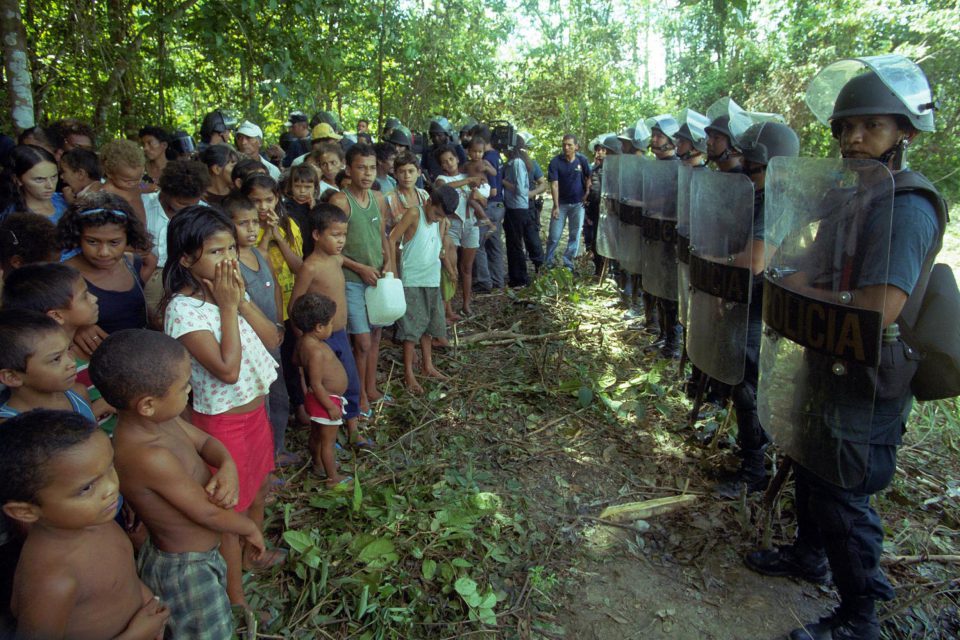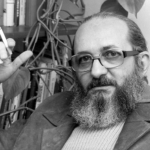New Books | Occupying schools, occupying land
Brazil’s Landless Workers Movement is transforming the face of rural schooling.
Author:
30 May 2019

Rebecca Tarlau argues that the Brazilian Landless Workers Movement is at its most potent when engaged in what she terms contentious co-governance, which uses disruption and protest in combination with institutional pressure to advance towards its goals.
This is an edited excerpt from Occupying Schools, Occupying Land: How the Landless Workers Movement Transformed Brazilian Education by Rebecca Tarlau (Oxford University Press).
The children march
“The landless children have arrived!” chanted some 500 children, ages four to 14, as they stormed past armed security guards into the Brazilian Ministry of Education in the capital city of Brasília on 12 February 2014. They had travelled from rural communities across the country to defend Educação do Campo, Education of the Countryside, the rights of schools located in the countryside to organisational, pedagogical and curricular practices based on their rural realities.
Over the previous two decades, this grassroots educational proposal, which promotes the sustainable development of rural areas and contests assumptions of the inevitability of rural- to-urban migration, has become institutionalised. In other words, the Brazilian state has formally adopted major components of the educational proposal through national policy, an office in the Ministry of Education, and dozens of federal, state and municipal programmes.
Nonetheless, despite official acknowledgment of this educational approach, governments at all levels continue to shut down rural schools and consolidate public education in large urban centres. The children held signs denouncing this trend: “37 000 schools closed in the countryside”, “Closing a school is a crime!” and “Landless children for the opening of schools in the countryside!”
The 500 protesting children were the sons and daughters of activists from the Movimento dos Trabalhadores Rurais Sem Terra, the Brazilian Landless Workers Movement (MST). The MST is one of the most well-known social movements in Latin America. The movement has become a reference point for left-leaning organisations around the world due to its success in occupying land and pressuring the government to redistribute this land to poor families.
Related article:
Since the early 1980s, the MST has pressured the state to give land rights to hundreds of thousands of landless families, through occupations of privately and publicly owned land estates. These families live on agrarian reform settlements, where they have also won access to government services such as housing, roads, agricultural technical assistance, education and health services. Additionally, tens of thousands of families continue to occupy land across Brazil, spending years living in plastic makeshift tents and fending off police attacks while waiting for the legal rights to this land.
The MST articulates its struggles in terms of three broad goals: land reform, agrarian reform and social transformation. Although land reform is a central component of agrarian reform, the movement separates these two goals in order to highlight that the initial struggle for land through land occupations is only a first step in achieving agrarian reform – the resources for families to live sustainably on this land. Social transformation is the MST’s struggle for socialist economic practices and what the movement refers to as a popular (grassroots) democracy. This is one of the most radical goals of the movement.
The movement’s vision of social transformation has also evolved over the past two decades to encompass women’s rights, including equal gender participation within the movement, the defence of indigenous lands, racial equality and, more recently, the celebration of lesbian, gay, bisexual and transgender (LGBT) working-class rights. Education is a critical component of achieving all of these political, economic and social goals.
A model of collective leadership
In the week before the children’s protest, 15 000 MST activists from across the country had travelled by bus to the capital city of Brasília to discuss the movement’s future at the MST’s Sixth National Congress. The Congress, which coincided with the movement’s 30th anniversary, exemplified the movement’s practice of collective leadership, which Miguel Carter describes as “a multidimensional, network-like organisation, composed of various decentralised yet well-coordinated layers of representation and collective decision making”.
Delegations of a couple hundred to several thousand MST leaders arrived from 24 of the 26 Brazilian states. Each state delegation organised itself into smaller collectives of several dozen activists, to oversee cooking, cleaning and other basic tasks necessary to camp for the week. State delegations also sent members to participate in congress-wide collectives, with themes such as agricultural production, education, youth, communications and international relations.
The agricultural production collective set up a large market in the middle of the tent-city, where state delegates sold produce and artisanal products from their communities. The youth collective brought together young people to participate in a parallel conference appropriate to their needs and interests. The grassroots organising collective – front of the masses (frente de massa) – planned the march that would occur in the middle of the week, to denounce the government’s lack of support for agrarian reform. Other collectives focused on women’s issues, health, culture and security, while an international relations collective hosted 250 international delegates.
Essential education
The protesting children were a demonstration of the central focus that education has had in the movement. In the early 1980s, during the first MST land occupations, local activists began experimenting with educational approaches in their communities that supported the movement’s broader struggle for agrarian reform and collective farming. These experiments included both informal educational activities in MST occupied encampments and alternative pedagogical practices in schools on agrarian reform settlements. As the MST grew nationally, these local experiments evolved into a proposal for all schools located in MST settlements and camps – which, by 2010, encompassed 2 000 schools with 8 000 teachers and 250 000 students.
The MST also pressured the government to fund dozens of adult literacy campaigns, vocational high schools and bachelor and graduate degree programmes for more than 160 000 students in areas of agrarian reform, through partnerships with over 80 educational institutions.
During the early 2000s, the MST’s educational initiatives expanded to include all rural populations in the Brazilian countryside, not only those in areas of agrarian reform. The proposal became institutionalised within the Brazilian state through national public policies, an office in the Ministry of Education, a presidential decree and dozens of programmes in other federal agencies and subnational governments. By 2010, the MST’s educational proposal – now known as Educação do Campo – was the Brazilian state’s official approach to rural schooling. Nonetheless, the implementation of the proposal varied widely by state and municipality.
The right to take part
During the MST’s Congress, the national education sector materialised the movement’s educational approach by organising a childcare center – the Center Paulo Freire – that engaged around 800 children in activities that touched on the themes of collective organisation, work, culture and history. On the third day of the Congress, 500 of these sem terrinha [little landless children] learned about another component of the MST’s pedagogy – struggle – by participating in their own direct action: occupying the Ministry of Education and declaring their right to locally based schools. While the children occupied the ministry, the head of the Educação do Campo office – an office created in 2004 as a result of MST mobilisations – tried to convince the minister to meet with the children, assuring him that he would not be in any danger.
After three hours, the minister came outside and promised the children quality education in the countryside. The leaders of the national MST education sector were happy the children had the opportunity to see the power of their collective action; however, they also understood that the minister’s words were empty promises if activists did not continue to engage in similar actions across the country, to demand the implementation of the MST’s educational programme.
MST activists demand schools in their communities and communities’ right to participate in the governance of these schools, with the purpose of promoting alternative pedagogical, curricular and organisational practices – a process I refer to as contentious co-governance. These practices encourage youth to stay in the countryside, engage in collective agricultural production and embrace peasant culture. These educational goals are an explicit attempt to prefigure, within the current public school system, more collective forms of social and economic relations that advance the future project of constructing a fully socialist society.
The MST’s demand to participate in educational governance is part of this broader trend of participatory experiments across Brazil and Latin America. The MST’s ability to transform public schools over the past 30 years has always been contingent on a simultaneous combination of disruption, persuasion, negotiation and co-governance.
Mobilising the movement
Once MST leaders institutionalise components of their educational goals within the state sphere, the mobilisation of the movement’s base is necessary to defend these gains. Therefore, the MST is continually engaging in contentious co-governance: overseeing and managing public institutions in coordination with state actors, while simultaneously engaging in contentious political actions and promoting practices within these institutions in direct conflict with the state’s own interests.

